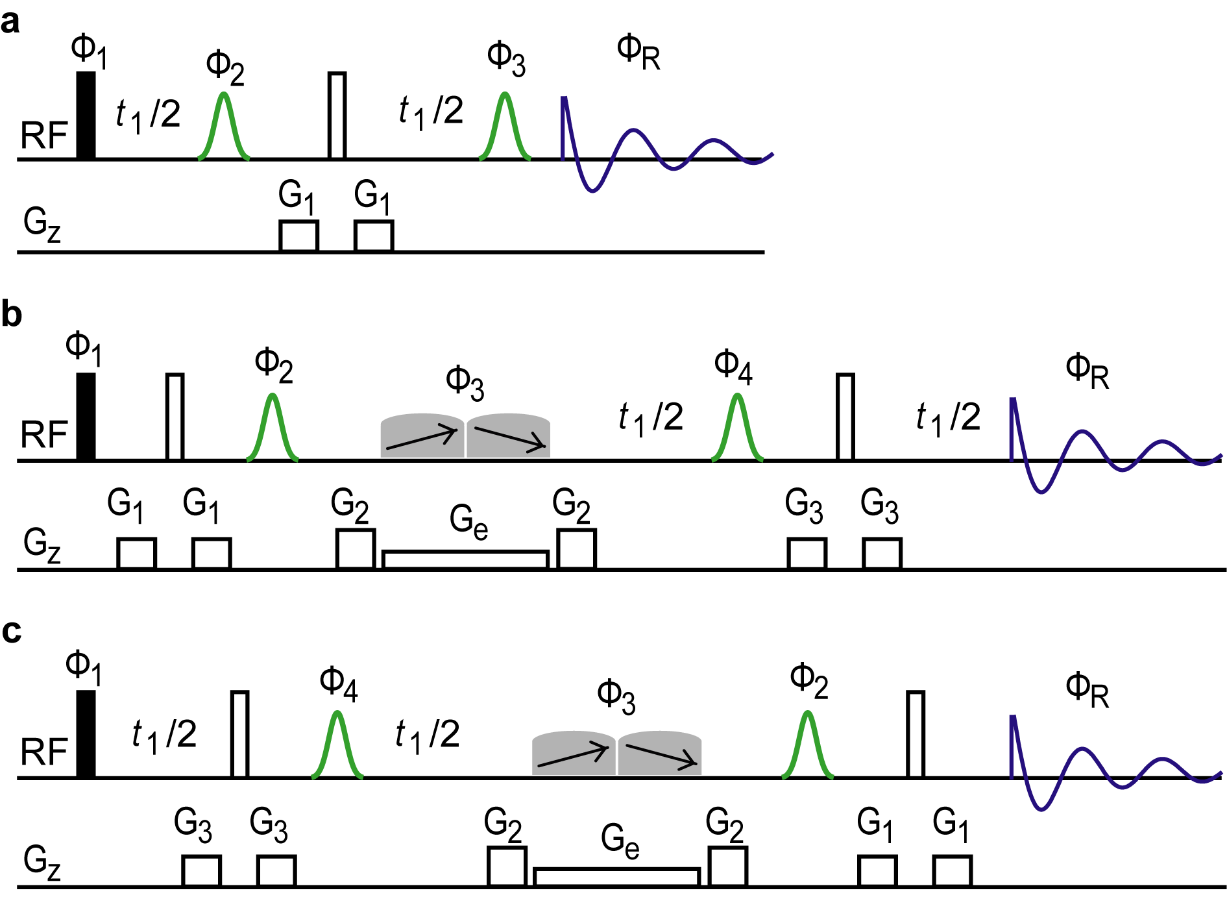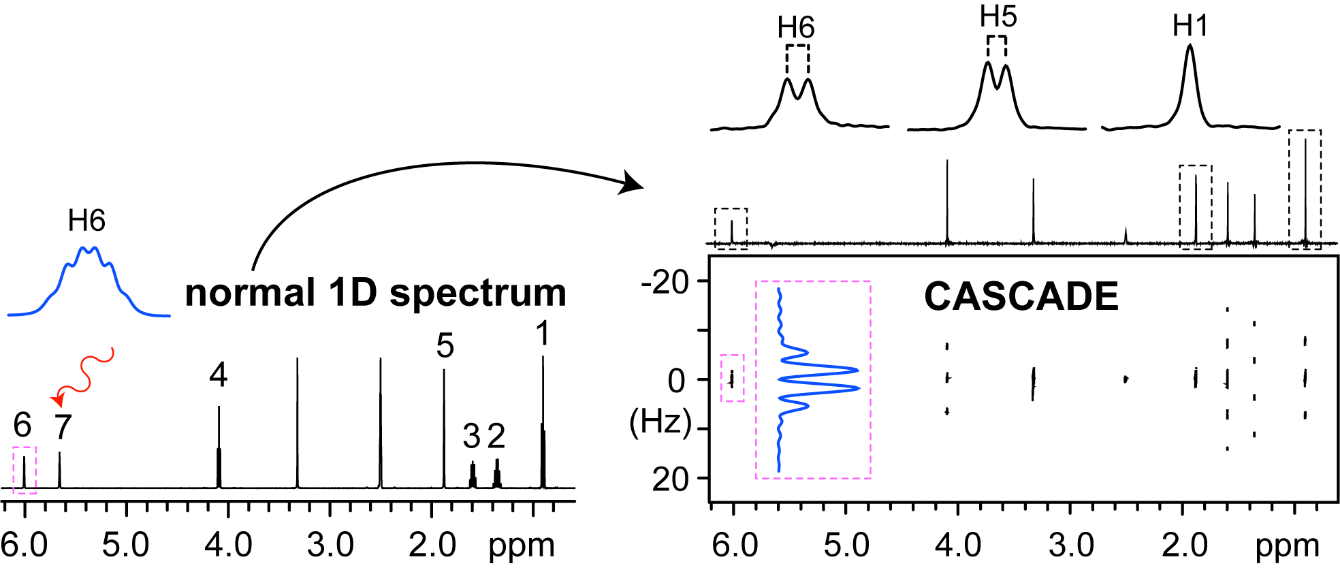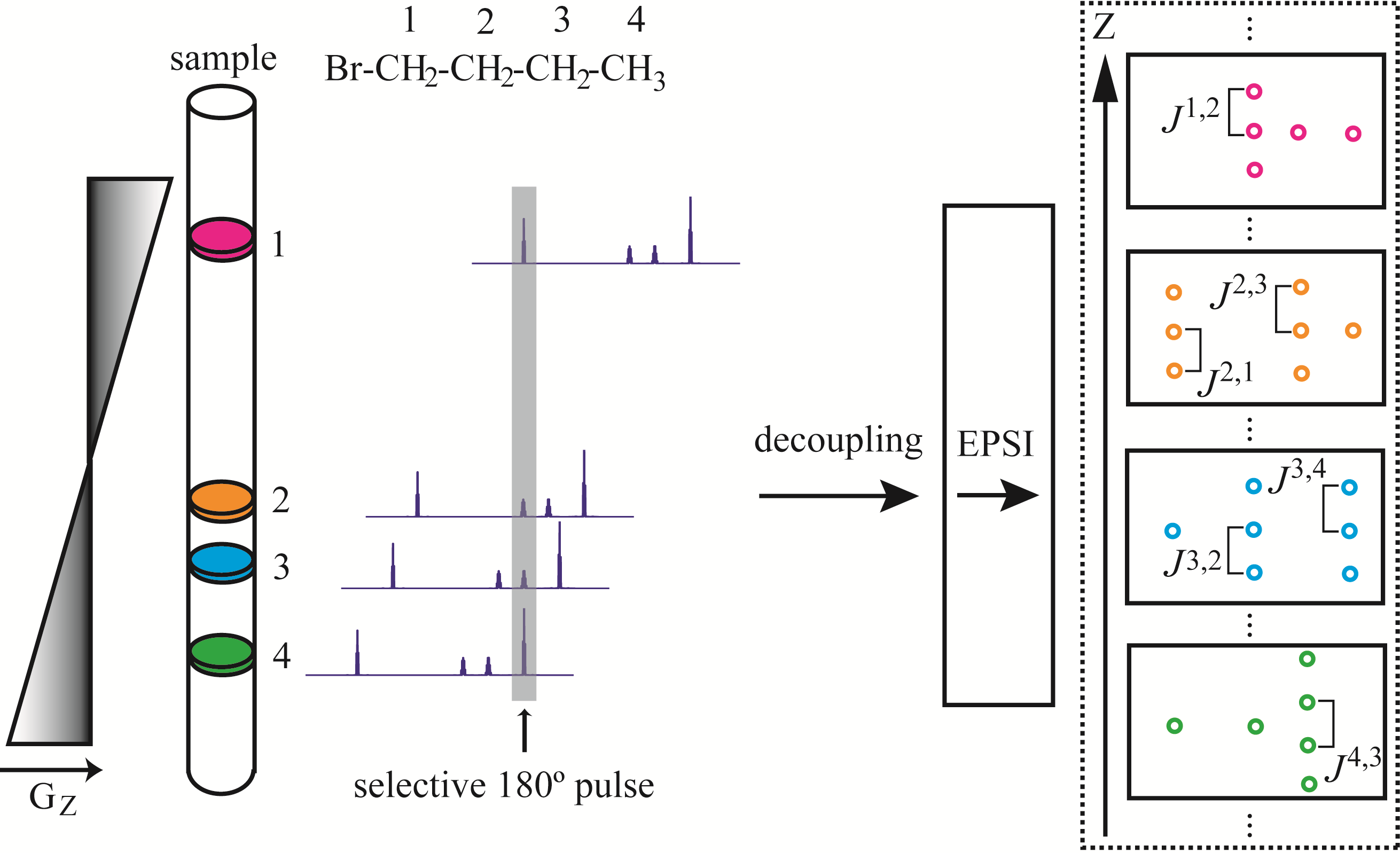Some pulse sequences been developed including (but not confining to):
1. Fully exploiting the power of 2D NMR J-resolved spectroscopy

Figure 1. Pulse sequences of CASCADE (Coupling Analysis by Selective Coupling Allocation and DisEntanglement). The sequence in a is CASCADE-I, used to obtain magnitude-mode J spectra. Sequences in b and c are CASCADE-II, used to obtain normal (N-type) and reversed (R-type) J spectra respectively, which can be combined to yield absorption-mode J spectra.

The pulse sequences for this method are shown in Fig. 1. In the first pulse sequence (CASCADE-I), a selective 180° pulse exerted on a specific proton is inserted in the middle of the normal spin echo, refocusing scalar couplings involving the selected proton. In contrast to common selective J experiments such as G-SERF and PSYCHEDELIC, where only targeted couplings remain active in the indirect dimension, scalar couplings except those involving the selected spin evolve in the indirect dimension in our method. Then all scalar couplings and chemical shift evolve in the direct dimension. This design converts the regular single 45° aligned multiplet patterns to double 45° aligned multiplet patterns, which are separated by the distance of the coupling constants involving the selected proton. After 45° tilting, the projection on to the F2 dimension would show doublets for resonances coupled to the selected proton and singlets for other resonances, and the F1 dimension would retain information of scalar couplings except those involving the selected spin. As a result, relevant multiplet structures are simplified.
The CASCADE-I experiment keeps full sensitivity. However, similar to conventional 2D J spectra, CASCADE-I spectra suffer from phase-twisted lineshapes and must be displayed in magnitude mode, which leads to resolution degradation and signal distortion. In order to achieve absorption-mode lineshapes, the Pell-Keeler method of combining normal and reversed J spectra can be employed. CASCADE-II sequences (Figs. 1b and c) are used to record normal and reversed J-spectra, respectively.
2. Boosting resolution in NMR spectroscopy by chemical shift upscaling


We present a chemical shift upscaling method, in which chemical shifts are upscaled by a given factor while scalar couplings are unchanged. As a result, signal dispersion and hence the resolution are improved. Therefore, it is possible to separate multiplets which originally overlap with each other and to extract their integrals for quantitative analysis. Improved signal dispersion and the preservation of scalar couplings also facilitate multiplet analysis and signal assignment. Chemical shift upscaling offers a method for enhancing resolution limited by magnetic field strength.
3. A simultaneous multi-slice selective J-resolved experiment for fully resolved scalar coupling information

Figure 1.

Figure 2.
The proposed SMS-SEJRES sequence is shown in Figure 1. First, the hard 90º pulse excites all spins in the sample. At the middle of the t1 evolution, a selective 180º pulse together with a spatial frequency encoding gradient reverses different spins in different cross sections of the sample. Then the PSYCHE decoupling module achieves broadband refocusing of all J-coupling evolutions. The overall effect of the gradient-encoded selective 180º pulse and PSYCHE module is that, all chemical shift and scalar couplings are refocused during t1, except those scalar couplings involving the spins that are reversed by the selective 180º pulse at different cross sections. We consider a molecule with spins of I1, I2,…,IN, whose chemical shifts are arranged in increasing order. Then these spins are reversed by the selective 180º pulse in different positions sequentially. It means that we can obtain different selective J-edited spectra in different positions of the sample. The second gradient G1 is used to compensate the effect of the first gradient G1. Finally, the EPSI detection module simultaneously records both the chemical-shift and the spatial information. The gradient Gp is used for adjusting positions of echo centers. A 3D data set can be obtained by this method, with three dimensions corresponding to scalar coupling (F1), chemical shift (F2) and spatial position, respectively. Therefore, selective J-resolved spectra for different protons can be extracted from corresponding spatial slices. It should be noted that the spatial dimension can also correspond to chemical shift due to the spatial frequency encoding. The action of the SMS-SEJRES experiment on the sample of n-Butyl bromide is shown in Figure 2.

